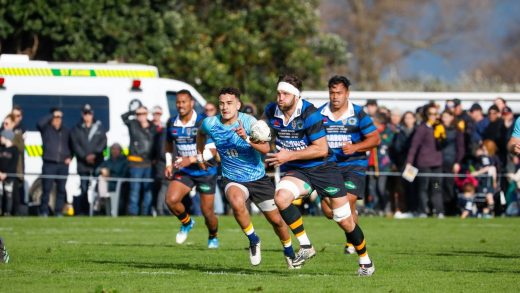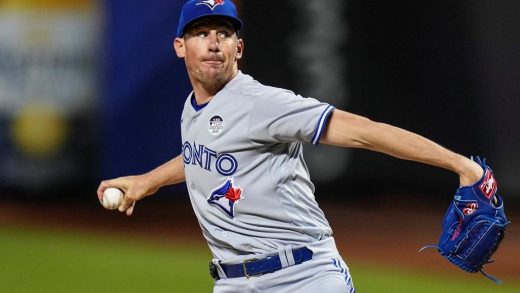
ANALYSIS: Since rugby went professional, the All Blacks have never endured as bad a World Cup cycle as the one they have just completed.
A win rate of a lowly 69% under Ian Foster, rounded out by that biggest defeat in their history, is comfortably New Zealand’s worst between World Cups in the modern era, and has in turn created much angst over whether the three-time champs are in any state to reign supreme at this year’s global showpiece.
With world No 1 Ireland boasting an impressive 82% win rate over the past four years, and France going into their home tournament at a very healthy 79%, the All Blacks are well back in third when it comes to the win-loss records of the leading nations going into this year’s event.
It’s the lowest the men in black have sat in any of the seven World Cup cycles there have been since the last of the amateur days in 1995.
But how does in-between form marry up with performance on the biggest stage?
Looking at ‘the big 10’ – formerly labelled the Tier One nations (before Japan was added this year to the re-named High Performance Unions), made up of the Rugby Championship and Six Nations teams, Stuff has dug the data on how they have each performed through these cycles in the professional era.
And in what should give All Blacks fans a decent dose of optimism, it’s only three times out of six where the best-performing side in the cycle have actually been the ones to go on and hoist the Webb Ellis Cup.
That was England in 2003 and the All Blacks themselves in 2011 and 2015.
That 2000-2003 cycle was the only other time aside from this latest one that the men in black have not been top of the pops. They operated at 78% under Wayne Smith then John Mitchell, placing them second behind the all-conquering English.
Sir Clive Woodward’s unit ran at 87%, which included claiming three Six Nations crowns as well as victories over the All Blacks in both their meetings, home and away, before going on to prevail in that extra-time epic against the Wallabies in Sydney, which remains the northern hemisphere’s sole World Cup glory.
New Zealand’s 2011 and 2015 triumphs then came on the back of being absolutely streets ahead of the competition in those respective cycles.
1 of 7Created with Datawrapper
1996-1999
2 of 7Created with Datawrapper
2000-2003
3 of 7Created with Datawrapper
2004-2007
4 of 7Created with Datawrapper
2008-2011
5 of 7Created with Datawrapper
2012-2015
6 of 7Created with Datawrapper
2016-2019
7 of 7Created with Datawrapper
2020-2023
Following the bold reappointment of Sir Graham Henry and his coaching staff after the 2007 quarterfinal disaster, the All Blacks, even with their wobbly 2009 and back-to-back defeats going into their 2011 home tournament, went 81% for the cycle, which was a whopping 21 percentage points better than the next-best performing sides – South Africa and France.
The story was even more glaring in the next four years leading into the 2015 event, the All Blacks losing just three games (and drawing two) of their 47 in that cycle, with their 89% win rate dwarfing the second-ranked Springboks’ 66% success.
But World Cups are, of course, also a snapshot in time, about who can produce when it really matters, in a seven-week period involving knockout footy.
And there has been no better illustration of this than from the Springboks.
While the Wallabies were second-best, with a win rate of 70% (behind the All Blacks’ 77%) in the four years leading up to their 1999 World Cup victory, South Africa’s two crowns in the professional age have come from a lowly fifth, and even sixth.
In 2007 it was again the All Blacks’ tournament to lose, after they were operating at a majestic 88% in the cycle. But lose it they of course did in that quarterfinal, to a French team who had been running second at 71%.
Dan Mullan/Getty Images
The All Blacks only need to look to the Springboks to see that form during World Cup cycles can count for little come the global showpiece.
However, it was the Boks who struck gold, after Jake White’s men won at just 60% over the four years, including an awful 5-7 record in 2006 and then three successive Tri-Nations defeats directly before the World Cup.
Then four years ag, they repeated the dose. The All Blacks were chugging along at 83%, with England and Ireland not far behind, at 77% and 73%, but the South Africans went to Japan behind even Wales and Scotland in the win-rate stakes, operating at just 50%.
Their miserable record of 22 wins, three draws and 19 losses had included that record 57-0 demolition by the All Blacks in 2017, with Allister Coetzee sacked early the next year and replaced by Rassie Erasmus.
But, even after falling to New Zealand in their opening game, they came good at the World Cup, timing their run and creating history by becoming the first side to win the title after losing a pool game.
Another interesting thing to note from these cycles is that even World Cup runners-up have not often been in great shape heading into the tournaments.
Not only have the silver medallists never been the top-performing teams in the cycle, but they have often come from a fair way back in the field themselves.
While the 2019 tournament saw second-best-performing England indeed finish as the beaten finalists, the previous events saw runners-up come from sixth, third, eighth (England in 2007 on the back of a very poor 41%), fourth and fourth.
Along with that, in all but the 1996-1999 cycle, where each of the best-four performing teams made the semifinals, there has always been one side in the top four who has lost a quarterfinal, or in the case of England in 2015, not even made it out of their pool.
1 NEWS
Ian Foster’s team is in Bavaria for a pre-World Cup training camp, on the heels of Saturday’s 35-7 defeat at Twickenham.
Only two can reach the semis again this year, thanks to World Rugby’s head-shaking decision to revert to an early draw for the tournament and using the world rankings as at January 1, 2020.
The upshot is that the All Blacks, Springboks, France and Ireland have all been lumped on the same side of the draw, despite having been the four-best performing sides in this cycle.
With even sixth-best Scotland also amongst that tough half, it does open up the path on the other side of the draw, though also presents potentially ‘easier’ semifinals for whichever of the aforementioned quartet progress.
In a tournament where there have only ever been four different winners, Ireland are poised to potentially change that, but there is certainly no clear favourite this time around.
Just look at the cycle – of all seven in the pro era, this one has featured the closest gap between the best two performing sides (three percentage points), while the 16 percentage-point spread across the top four nations is the slimmest since it was exactly that same margin in the first, back in 1996-1999.


